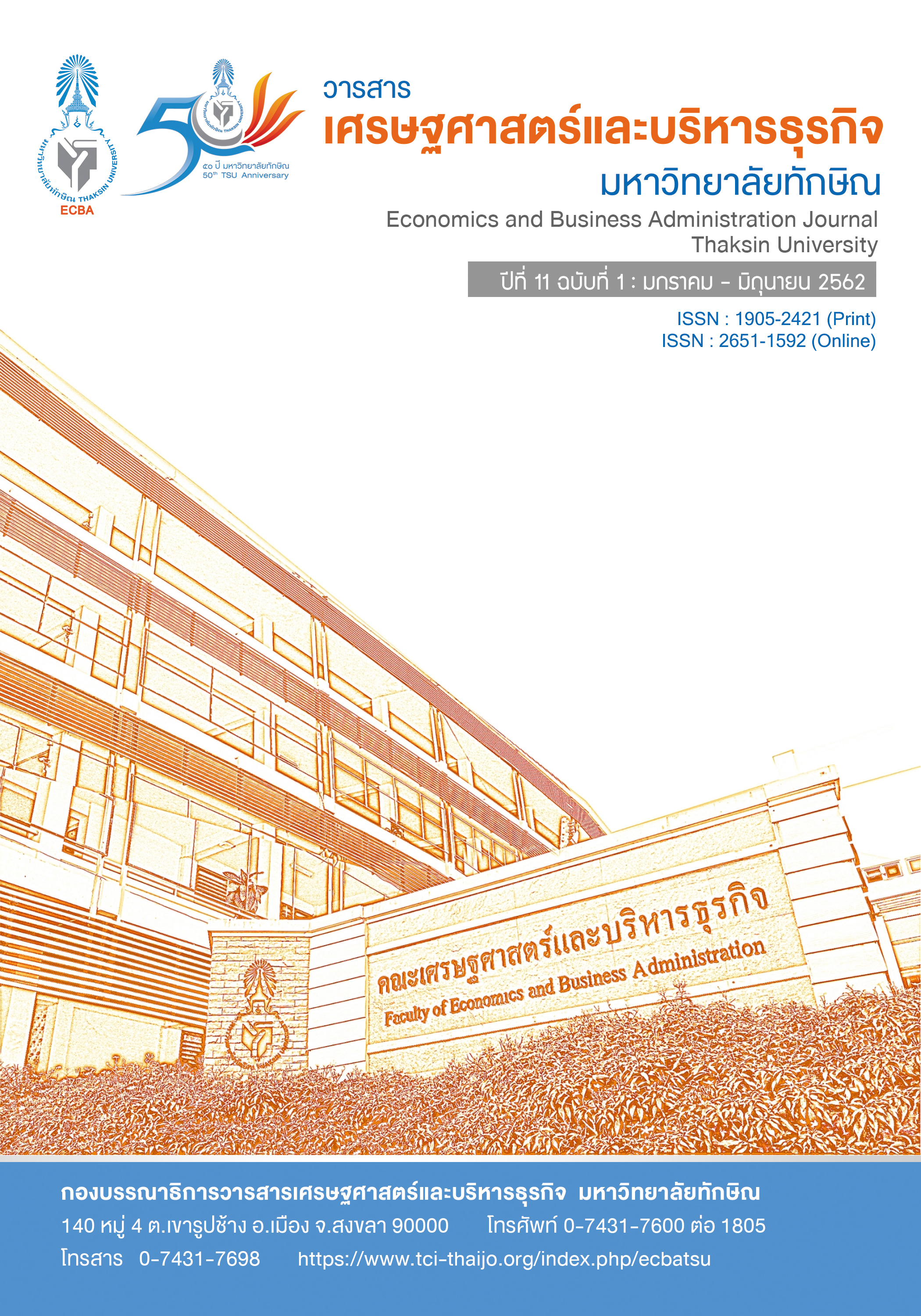Innovation and Development of Woven Fabric Products from Pineapple Leafs Fiber for Fashion Product Design of Rak Ban Rao Songkhla Group
Keywords:
Woven Fabrics Using Pineapple Leaf Fibers, Natural Dyeing Process, Wisdom, Fashion Product DesignAbstract
Research project for developing woven fabrics using pineapple leafs and natural dyes, to increase the higher value of handicraft products of Rak Ban Rao Group, The researcher chose the methodology of mix method for this research by using both quantitative and qualitative approach. The research objectives were to study 1) the body of knowledge pineapple leaf fibers in the dyeing process of Rak Ban Rao community enterprise 2) the fashion textile product development from pineapple fabrics and 3) the consumer attitudes and preferences towards fashion product design from pineapple fabrics. The qualitative instrument was interview forms and the quantitative instrument was questionnaires. Qualitative research methods by field exploratory survey for collecting qualitative data, in-depth interviews key informants, the results indicated that Rak Ban Rao community enterprise conserve the natural dyeing process, which is invaluable wisdom to use natural ingredients, numerous plantings provide shade and many brilliance of color, including natural disperse dyes such as lime stones, ashes give shades of color. The examination of the fashion textile product development from pineapple fabrics concept from 3 woven product design experts found that the desire of the fashion textile product development from pineapple fabrics with dyeing with natural colors were men’s suit and trousers working women dress, hat, wallet and shoes. Quantitative research methods, data was collected via survey questionnaires with purposive sampling 30 consumers who were interested in the development fashion product from hand woven fabric from pineapple leaf fibers with natural dyes, and the answer could be used for developing prototypes in fashion products. The results showed the positive attitudes at the highest level in the product is beautiful ( = 4.24) and the sample were given feedback on there should be more encouraged product in order to increase to design and develop new the higher value of handicraft products entering the international market.
References
ทวีชัย อมรศักดิ์ชัย และ นันทยา เก่งเขตร์กิจ. (2558). แนวทางการใช้ประโยชน์เชิงอุตสาหกรรมของเส้นใยใบสับปะรด. วารสารวิทยาศาสตร์ มศว. 31(1), 1 – 15.
ปรัชญ์ หาญกล้า. (2556). การออกแบบเครื่องแต่งกายเพื่อพัฒนางานพื้นถิ่นให้เป็นสินค้าระดับชาติ โดยใช้แนวคิดการออกแบบอย่างยั่งยืน : กรณีศึกษาผ้าทอมือ อำเภอเวียงเชียงรุ้ง จังหวัดเชียงราย. วิทยานิพนธ์ ศิลปกรรมศาสตรมหาบัณฑิต (นฤมิตศิลป์). กรุงเทพฯ : จุฬาลงกรณ์มหาวิทยาลัย.
พระสมคิดจารณธมโม และคณะ. (2545). กระบวนการพัฒนาผ้าฝ้ายย้อมสีธรรมชาติกลุ่มสตรีทอผ้าย้อมสีธรรมชาติบ้านดป่งคำ อำเภอสันติสุข จังหวัดน่าน. รายงานการวิจัยฉบับสมบูรณ์ ทุนวิจัยจากสำนักงานกองทุนสนับสนุนการวิจัยภาคเหนือ (สกว). สืบค้นเมื่อ 10 กุมภาพันธ์ 2562, จาก https://elibrary.trf.or.th/
วรารัตน์ วัฒนชโนบล และ คณะ. (2558). การจัดการความรู้การทอผ้าพื้นบ้านของกลุ่มอาชีพเสริมบ้านสุขเกษม อำเภอบางเลน จังหวัดนครปฐม. รายงานวิจัยฉบับสมบูรณ์. กรุงเทพฯ : มหาวิทยาลัยเทคโนโลยีราชมงคลรัตนโกสินทร์.
ศศิธร วิศพันธุ์. (2560). การออกแบบผลิตภัณฑ์กระเป๋าผ้าทอเกาะยอโดยใช้เทคนิควิลท์. วารสารวิชาการ ศิลปะสถาปัตยกรรมศาสตร์ มหาวิทยาลัยนเรศวร. 8(2), 1 – 9.




